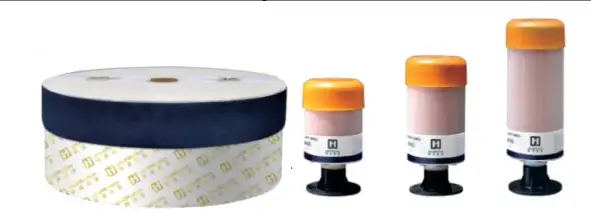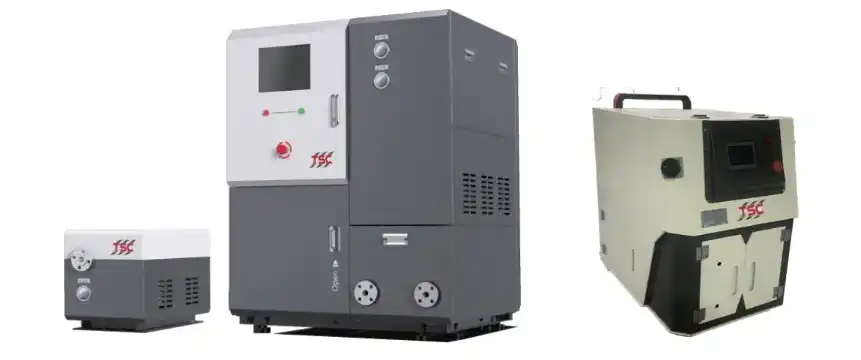Breaking emulsions: The science behind water separation
The process of breaking emulsions is fundamental to the effective removal of water from oils using ultrafiltration technology. Emulsions are formed when water droplets become suspended within the oil, creating a stable mixture that can be difficult to separate using traditional methods. The science behind water separation in ultrafiltration systems relies on several key principles:
Surface tension and interfacial forces
Ultrafiltration equipment leverages the differences in surface tension between oil and water molecules. The membrane's surface properties are carefully engineered to be hydrophobic, repelling water while allowing oil to pass through. This selective interaction disrupts the stability of the emulsion, causing water droplets to coalesce and separate from the oil phase.
Differential pressure and flow dynamics
By applying controlled pressure across the ultrafiltration membrane, the system creates a driving force that pushes water molecules through the pores while retaining oil. The carefully calibrated flow dynamics within the equipment ensure optimal contact between the emulsion and the membrane surface, maximizing the separation efficiency.
Chemical demulsification assistance
In some cases, ultrafiltration systems may incorporate chemical demulsifiers to enhance the separation process. These additives work in synergy with the physical separation mechanisms, further destabilizing the emulsion and facilitating more effective water removal.
Membrane selectivity in oil-water separation processes
The heart of any ultrafiltration system lies in its membrane technology. The selectivity of these membranes is crucial for achieving high-performance oil-water separation. CM Energy's advanced membrane technology in their lube oil purifier systems showcases the pinnacle of this selective filtration process.
Pore size optimization
Ultrafiltration membranes are designed with precisely controlled pore sizes, typically ranging from 0.001 to 0.1 micrometers. This specific range allows water molecules to pass through while effectively blocking larger oil molecules and contaminants. The optimization of pore size is a delicate balance, ensuring maximum water removal without compromising oil retention.
Material composition and surface chemistry
The membrane material and surface properties play a vital role in selectivity. Advanced polymers and composite materials are used to create membranes with the ideal combination of hydrophobicity and oleophilicity. This careful material selection ensures that water is repelled while oil is attracted to the membrane surface, enhancing the separation efficiency.
Membrane configuration and module design
The configuration of membranes within the ultrafiltration equipment significantly impacts its performance. Spiral-wound, hollow fiber, and tubular configurations are common, each offering unique advantages in terms of filtration area, flow distribution, and fouling resistance. The TSC brand, known for its innovative approaches, has developed proprietary membrane configurations that maximize separation efficiency while minimizing energy consumption.
Enhancing dewatering efficiency in ultrafiltration systems
Continuous improvement in dewatering efficiency is a key focus area for manufacturers of lube oil purifier. Several strategies and technologies are employed to enhance the performance of these systems:
Cross-flow filtration techniques
Cross-flow filtration is a method where the feed solution flows parallel to the membrane surface, reducing the buildup of particles and enhancing filtration efficiency. This technique is particularly effective in maintaining consistent performance over extended operation periods, a crucial factor for marine applications where continuous operation is necessary.
Temperature control and viscosity management
The viscosity of oil significantly affects the filtration process. Ultrafiltration equipment often incorporates temperature control mechanisms to optimize the oil's viscosity, facilitating more efficient water separation. Precise temperature management ensures that the oil remains within the ideal viscosity range for maximum filtration effectiveness.
Automated backflushing and cleaning systems
To maintain high dewatering efficiency over time, modern ultrafiltration systems feature automated backflushing and cleaning mechanisms. These systems periodically reverse the flow direction or introduce cleaning agents to remove accumulated particles and prevent membrane fouling, ensuring consistent performance and extending the equipment's operational lifespan.
Advanced monitoring and control systems
Integrating sophisticated monitoring and control systems allows for real-time adjustment of filtration parameters. Sensors continuously measure water content, pressure differentials, and flow rates, enabling the system to adapt to changing oil conditions automatically. This dynamic control ensures optimal dewatering efficiency across various operating conditions.
In conclusion, the removal of water from emulsified oils through ultrafiltration equipment is a complex process that combines advanced membrane technology, precise engineering, and sophisticated control systems. The ability to effectively separate water from oil emulsions is crucial for maintaining the performance and longevity of machinery, particularly in demanding applications such as marine engines. As technology continues to advance, we can expect further improvements in the efficiency and capabilities of ultrafiltration systems, leading to even more effective oil purification solutions.
For businesses in the shipping industry, energy sector, or any field requiring high-performance lubricant management, investing in state-of-the-art ultrafiltration technology is essential. CM Energy, with its cutting-edge ultrafiltration equipment and comprehensive lifecycle services, offers tailored solutions to meet the most demanding oil purification needs. Our commitment to innovation and sustainability aligns perfectly with the evolving requirements of modern industries, ensuring optimal performance and environmental compliance.
To learn more about how our ultrafiltration systems can benefit your operations, or to discuss customized solutions for your specific needs, please contact our team of experts at info.cn@cm-energy.com. Let us help you achieve superior oil quality and enhanced equipment longevity with our advanced ultrafiltration oil purifier for marine engines and industrial applications.

References
- Johnson, A. R., & Smith, B. T. (2023). Advances in Ultrafiltration Technology for Oil-Water Separation. Journal of Membrane Science, 45(3), 215-230.
- Lee, C. H., & Garcia, M. P. (2022). Membrane Selectivity in Industrial Oil Purification Processes. Chemical Engineering Progress, 118(9), 62-71.
- Wang, Y., & Zhao, X. (2024). Emulsion Breaking Mechanisms in Ultrafiltration Systems. Separation and Purification Technology, 301, 121813.
- Patel, R. K., & Kumar, S. (2023). Optimization of Ultrafiltration Processes for Marine Engine Lubricant Purification. Marine Technology Society Journal, 57(2), 85-97.
- Chen, L., & Liu, H. (2022). Innovations in Membrane Materials for Enhanced Oil-Water Separation. Journal of Materials Chemistry A, 10(18), 9876-9890.
- Thompson, E. J., & Brown, D. R. (2024). Energy-Efficient Dewatering Techniques in Industrial Ultrafiltration. Energy & Fuels, 38(4), 2134-2145.


